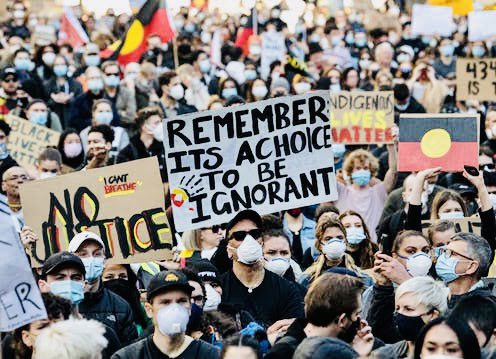
Research has identified at least 270 massacres over 140 years, as part of Australia’s systematic state-sanctioned attempts to eradicate First Nations people. This figure only includes documented cases. 1/5 #UluruStatement #AusUPR20 #Auspol 

There were many massacres that were not documented and covered up. This form of genocide resulted in the population of First Nations people reducing from an estimated 1-1.5 million at the time of invasion to less than 100,000 by the 1900s and now approximately 799,000 today. 2/5
Australia’s state-sanctioned physical violence did not end in history. According to the 2021 Human Rights Watch World Report, Australia’s global reputation suffers. The Australian Government has failed to address longstanding abuses against First Nations people. 3/5
Aboriginal & Torres Strait Islander people are still significantly overrepresented in the criminal justice system, making up 29% percent of the adult prison population, but just 3% of Australia’s population. In 2020 at least seven Indigenous people died in Australian custody. 4/5
The 2021 report notes reducing incarceration rates requires systemic reforms: repeal punitive bail & mandatory sentencing laws, decriminalise public drunkenness, end over-policing of Indigenous communities, & raise the criminal responsibility age from 10 to at least 14 years. 5/5
• • •
Missing some Tweet in this thread? You can try to
force a refresh






